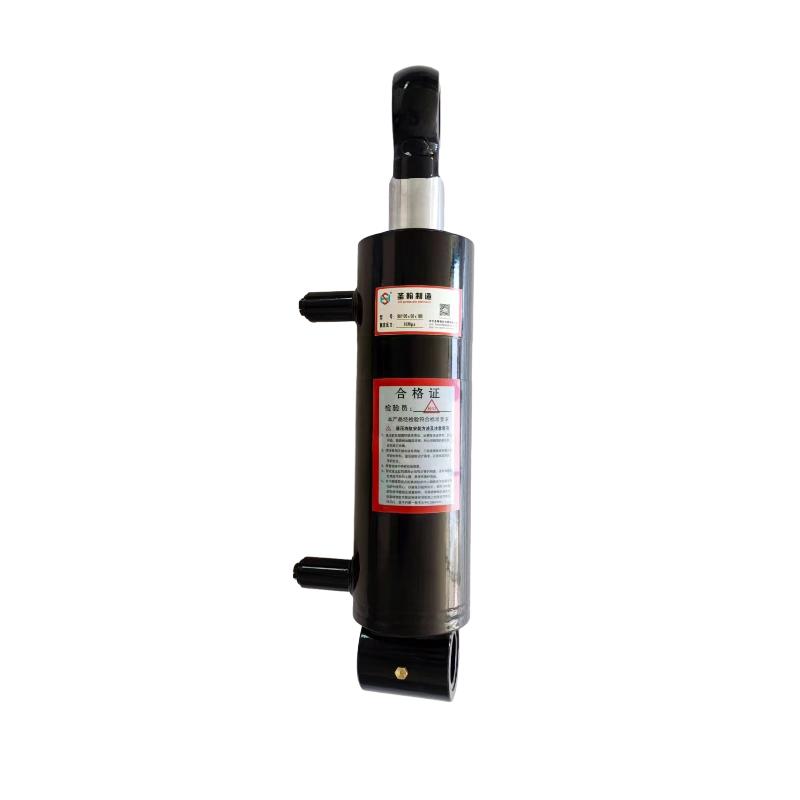Jul . 12, 2024 13:44 Back to list
Hydraulic cylinder products with high-quality gland seal for optimal performance and durability
In hydraulic systems, gland seals play a crucial role in maintaining the efficiency and performance of hydraulic cylinders. These seals are responsible for preventing leaks and contamination of the system, ultimately ensuring smooth operation and preventing costly downtime.
Gland seals are typically comprised of materials such as rubber, polyurethane, or a combination of both. These materials are chosen for their ability to withstand high pressure and temperature variations that hydraulic systems are often subject to. The design of the gland seal is also important, as it must create a tight seal around the piston rod to prevent any fluid from escaping.
One of the key functions of the gland seal is to prevent external contamination from entering the hydraulic system. This includes dirt, dust, and moisture, which can all cause damage to the internal components of the system if not properly sealed out. By maintaining a secure seal around the piston rod, gland seals help to prolong the life of the hydraulic cylinder and reduce the need for costly repairs.
In addition to preventing contamination, gland seals also help to maintain the overall efficiency of the hydraulic system. By minimizing leaks, the system can operate at optimal levels, delivering consistent performance without the loss of hydraulic fluid

gland seal in hydraulic cylinder products. This is especially important in industries where precision and reliability are paramount, such as manufacturing, construction, and agriculture. While gland seals are designed to be durable and long-lasting, they will eventually wear out over time. Regular maintenance and inspections are essential to ensure that the seals are still functioning properly and to address any issues before they lead to more serious problems. If a gland seal is found to be damaged or worn, it should be replaced promptly to prevent any further damage to the hydraulic system. Overall, gland seals play a vital role in the performance and longevity of hydraulic cylinders. By preventing leaks and contamination, these seals help to maintain the efficiency of the system and reduce the risk of costly downtime. Regular maintenance and inspections are key to ensuring that gland seals are functioning properly and to address any issues before they escalate. With proper care and attention, gland seals can help to keep hydraulic systems running smoothly and reliably for years to come.

gland seal in hydraulic cylinder products. This is especially important in industries where precision and reliability are paramount, such as manufacturing, construction, and agriculture. While gland seals are designed to be durable and long-lasting, they will eventually wear out over time. Regular maintenance and inspections are essential to ensure that the seals are still functioning properly and to address any issues before they lead to more serious problems. If a gland seal is found to be damaged or worn, it should be replaced promptly to prevent any further damage to the hydraulic system. Overall, gland seals play a vital role in the performance and longevity of hydraulic cylinders. By preventing leaks and contamination, these seals help to maintain the efficiency of the system and reduce the risk of costly downtime. Regular maintenance and inspections are key to ensuring that gland seals are functioning properly and to address any issues before they escalate. With proper care and attention, gland seals can help to keep hydraulic systems running smoothly and reliably for years to come.
Latest news
-
Fork Lift Power Units - Hebei Shenghan | Efficiency, Reliability
NewsJul.13,2025
-
1.5-Ton Turbocharged Cylinder-Hebei Shenghan|Hydraulic Solution,Energy Efficiency
NewsJul.13,2025
-
Auto Hoist Power Units-Hebei Shenghan|Efficiency&Industrial Lifting
NewsJul.13,2025
-
Double Acting Power Units-Hebei Shenghan|Hydraulic Solutions,Industrial Efficiency
NewsJul.13,2025
-
1.5 Ton Lifting Cylinder 70/82-40-290-535 - High-Performance Hydraulic Solution | Hebei Shenghan
NewsJul.13,2025
-
Fork Lift Power Units - Hebei Shenghan | Efficiency&Reliability
NewsJul.13,2025
